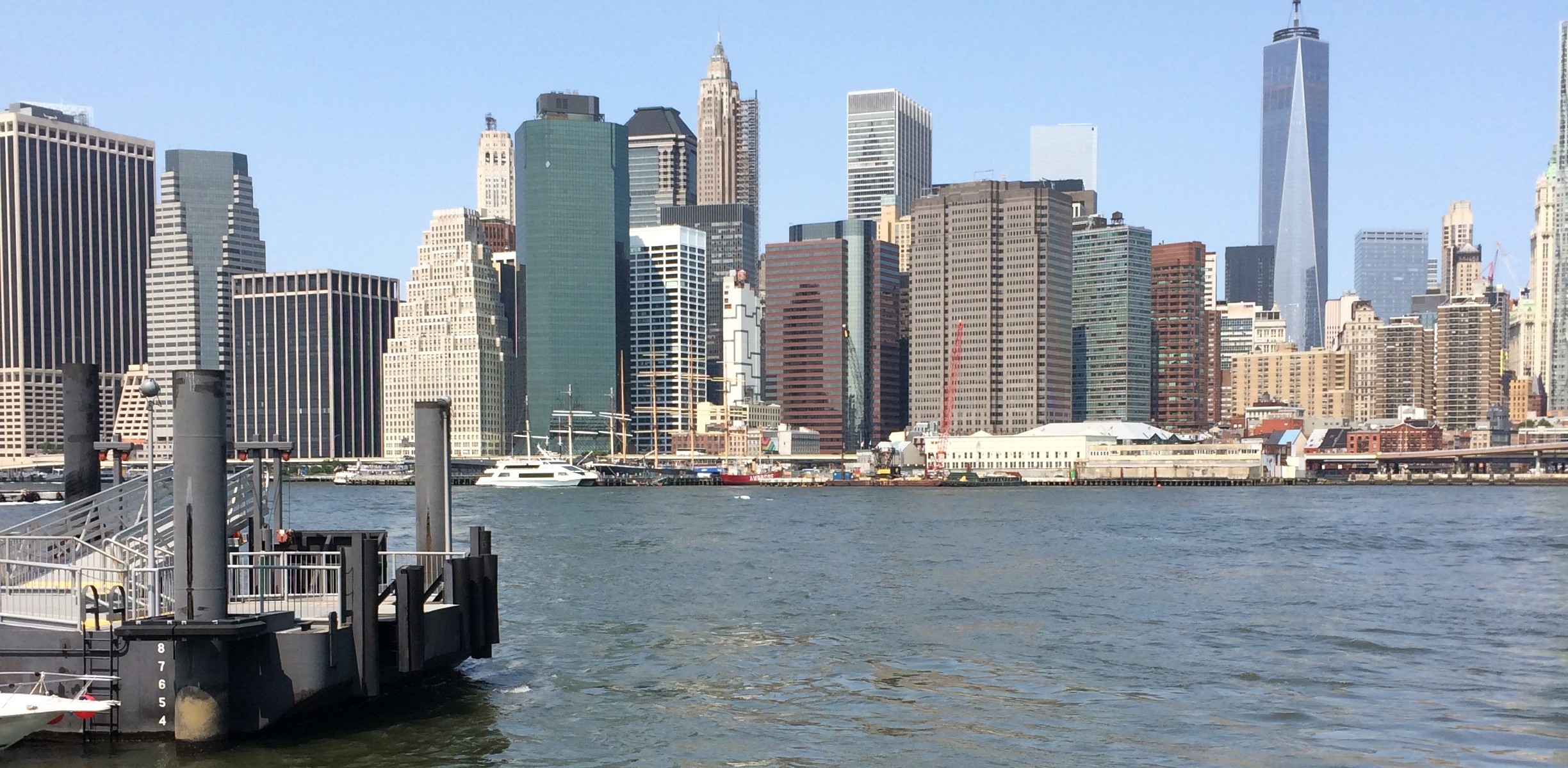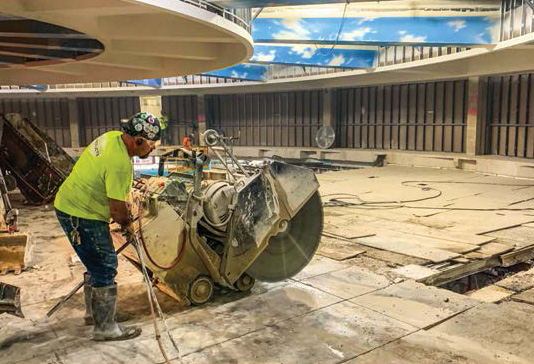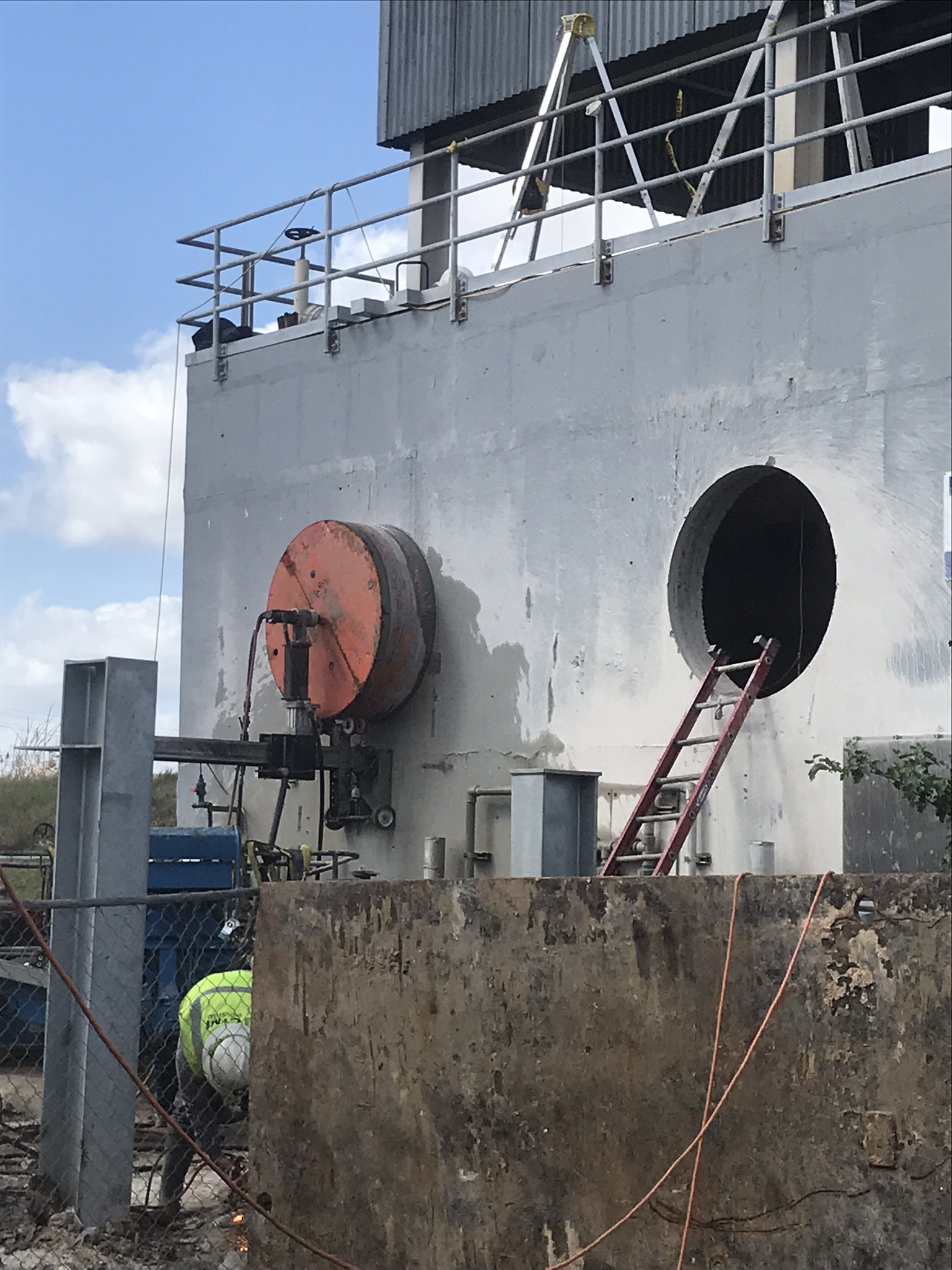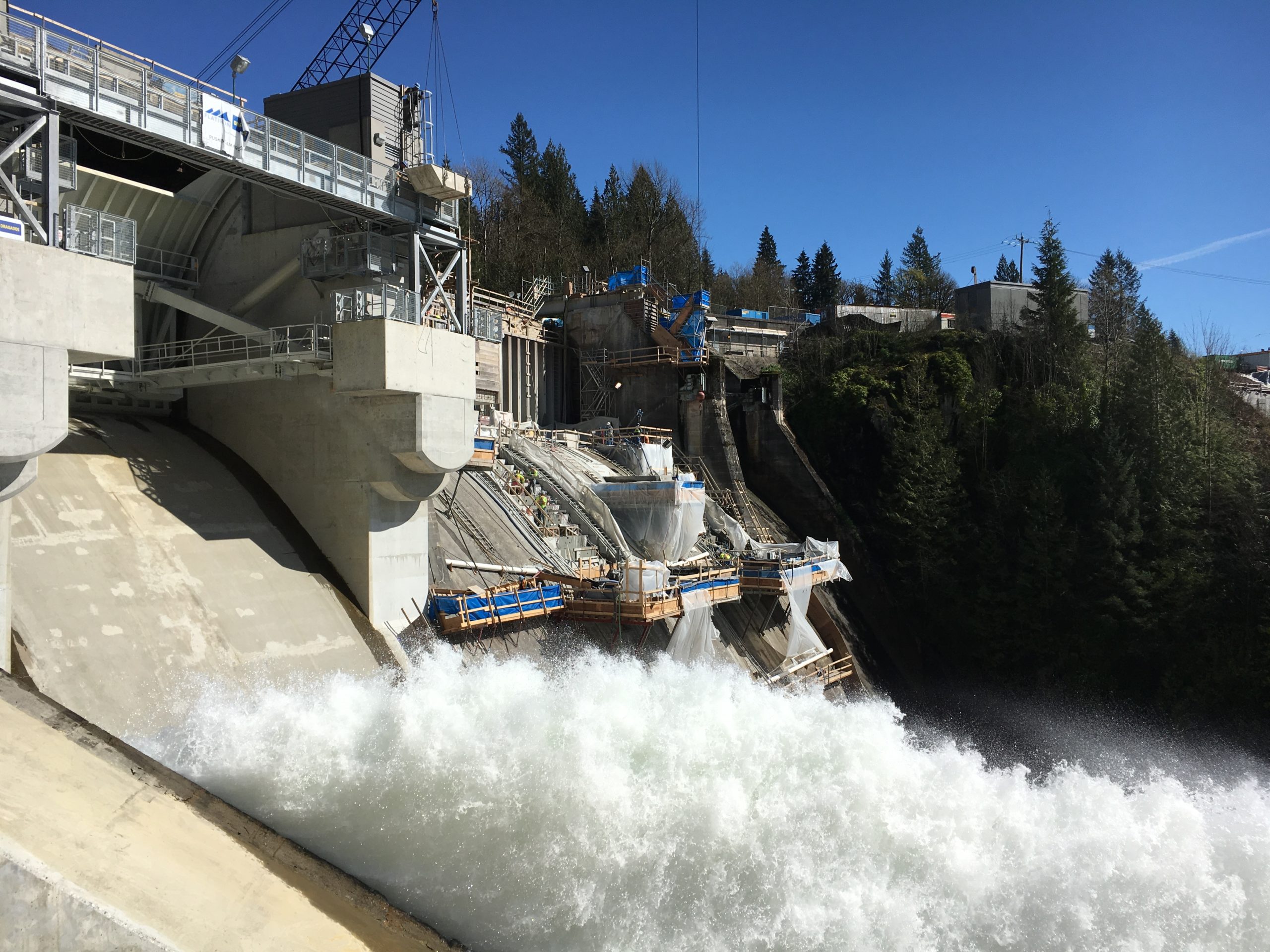
One to Beam Up
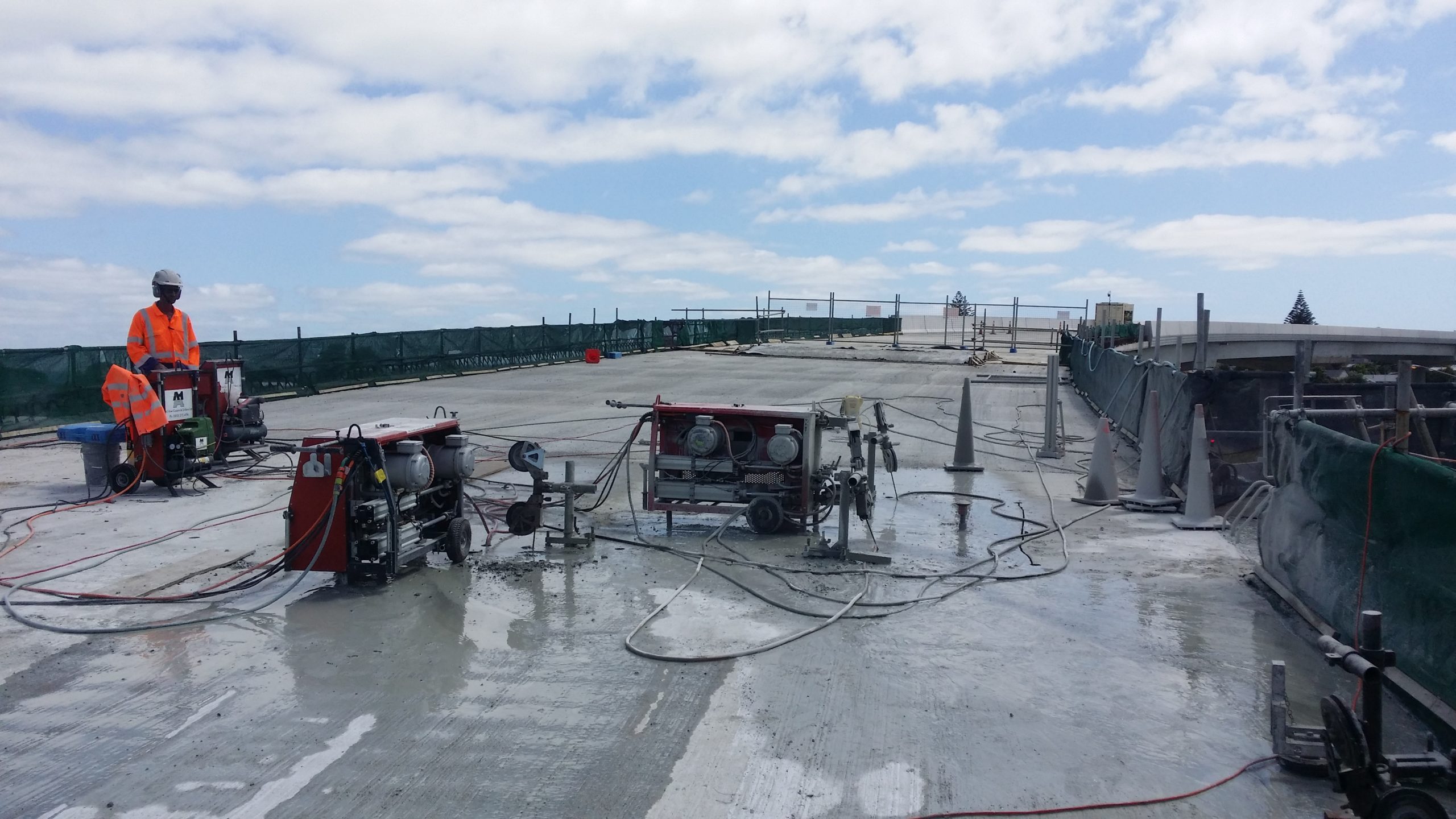
Star Cutter Transports Defective Concrete from Ramp
The use of understrength concrete during the construction of a new motorway off-ramp meant a support beam and its surrounding concrete had to be replaced before the ramp was opened to traffic. The concrete would not have withstood the anticipated volume of traffic traveling over it, which would have led to major structural failure and the endangerment of commuters. A 95-cubic-meter (3,355-cubic-foot) section had to be precisely cut and removed using a combination of advanced diamond wire sawing and hydro-demolition techniques.
The $1.4 billion NZD ($1 billion USD) Waterview Connection project is one of the most important infrastructure upgrade and road improvement projects ever to take place in New Zealand, completing a 48-kilometer (30-mile) motorway ring route around the city of Auckland. When forming a portal beam on one of four newly-constructed ramps of the Great North Road Interchange, several truck-loads of understrength concrete were incorrectly placed. The interchange was a key feature of the project so, to maintain schedule, the remaining sections of the bridge were completed with a temporary support structure remaining in place at the understrength area.

The contractor used a wire saw to cut 20 pieces of concrete for removal by crane.
Once unimpeded access to the portal beam was available, the Well Connected Alliance—the New Zealand Transport Agency and overseas companies with expertise in infrastructure, tunneling and design—contracted CSDA member A1 Kiwi Cutter & Drillers Ltd. of Auckland to carry out the wire sawing portion of the work. Cutting techniques with diamond wire, along with hydro-demolition, were chosen as the safest and most efficient ways to remove the defective concrete.
The portal beam was 15 meters long (49 feet) by 2.5 meters wide (8 feet) and 2 meters tall (7 feet). Additionally, there was a 2-meter (7-foot) square corbel at each end that also had to be removed. The portal beam held up Super T pre-cast beams, which had 20 stressing strands coming out of each one up to 500 millimeters (20 inches) above the soffit. The corbels had up to D40 vertical reinforcing bars at approximately 100-millimeter (4-inch) centers that had to be retained.
Wire sawing was specified to remove the top 1.5 meters (5 feet) of the portal beam and hydro-demolition was specified to remove the concrete from the bottom 500 millimeters (20 inches). This ensured that stressing strands and corbels were not damaged and that vertical reinforcing bars were left intact for tie-in to the replacement section.
“We had already worked with the client on a number of quite difficult and risky concrete removal jobs in different parts of the overall project,” said Ross Cole, Technical Manager of A1 Kiwi Cutters & Drillers. “These jobs had been completed close to budget and within schedule so we had already done most of the “selling” to get this work,” they added.
The area surrounding the portal beam presented a series of challenges for the team from A1 Kiwi. The beam and surrounding concrete was on an elevated section of the off-ramp approximately 20 meters (66 feet) above a nearby stream, with a corresponding on-ramp spaced a similar distance across from it. All slurry produced by wire sawing and hydro-demolition had to be captured to avoid contaminating the nearby stream. Additionally, a 3-meter-wide (10-foot) working platform had to be constructed on three sides of both corbels that was capable of accommodating the 1-ton hydro-demolition robot.
A shield was erected around the work area to funnel the concrete run-off into a temporary holding dam. This allowed all of the solids to drop out of suspension, leaving the site wastewater system to treat the high pH water so that it could then be discharged back into the environment. The shielding also prevented flying debris from exiting the immediate area and created a noise barrier. The jobsite was about 500 meters (1,640 feet) from a school and there were a number of residences in the vicinity, so planning to alleviate any noise nuisance was critical. Noise was reduced to below legal limits by a combination of heavy tarpaulins and temporary fence panels, directing the noise upwards.

Cut sections measured 8 feet long and weighed between 5 and 9 tons.
To remove the ramp sections using wire sawing techniques, A1 Kiwi operators core drilled six 50-millimeter-diameter (2-inch) holes through the portal beam at the specified reduced level using a Hilti drill rig. The holes were positioned so that when wire sawing commenced, there would be sufficient angle on the cut to ensure the bottom of the concrete was not as wide as the top. This was done so that each piece did not exceed the load limit of the 350-ton crane at its set swing radius. Chemical anchors were used to rig the concrete to the crane.
A Hilti DS WS 15 wire saw fitted with a 20-meter (66-foot) length of diamond wire was used to cut and remove 20 sections of concrete, each weighing between 5 and 9 tons. A1 Kiwi marked out five areas on the concrete ramp that were 2.5 meters (8 feet) long and 1 meter (3 feet) wide. The wire saw operator then set up the corect pulley configuration and performed a horizontal pull cut across the length of the marked area at a depth of 1.5 meters (5 feet) before making vertical pulls along the length and width of the concrete to free the cut section. The last cut completed was an angled cut that created two wedge-shaped 2.5-meter-long (8-foot) pieces that were rigged and removed by crane. This process was repeated a further nine times, with each piece taking approximately 1.5 days to cut and remove including setup and take down.
Over 30 days, the team from A1 Kiwi completed the cutting and removal of 45 cubic meters (1,589 cubic feet) of concrete from the off-ramp of the Great North Road Interchange The work was completed just two days after the originally scheduled date, but to the satisfaction of the Alliance team.
On completion of the concrete cutting and removal tasks, a hydro-demolition company arrived onsite to complete the high-pressure water blasting of the remaining sections. A 500-horsepower pump was used with a hydro-demolition robot on the two corbels, the bottom 500-millimeter (20-inch) section of the portal beam and an area of deck concrete over the Super T beams. Water was stored at 1,500 bar (22,000 PSI) and left the lance at approximately twice the speed of sound to remove the concrete. The hydro-demolition work removed the remaining 50 cubic meters (1,766 cubic feet) of concrete in 45 days.
The main concern for the hydro-demolition portion of the work, was that fly-rock would escape and hit passing traffic. All barriers were thoroughly checked and made robust enough to prevent this from happening. The work area was 20 meters (66 feet) above ground, so a strong temporary structure was built for the hydro-demolition robot to operate on during the corbel demolition stage.
“There were significant challenges for this project. The main concern for the customer was the job program overrunning and delaying final completion of the whole project,” explained Robert Hare of Tox Free Pty Ltd. of Melbourne, Australia. “For us, we were faced with a challenging program that had to include comprehensive environmental controls to mitigate both pollution and noise. We developed a good working relationship with the overall project management team and, by working in conjunction with them, managed all risks to get a successful outcome,” he added.
Enabling works for the Waterview Connection began in January 2012 and the project is due to be completed by the end of 2016. With help from this professional concrete sawing and drilling contractor, the Great North Road Interchange will open early 2017 as planned.
Company Profile
Established in 2005, A1 Kiwi Cutters & Drillers Ltd. is one of the largest concrete cutting companies in Auckland, New Zealand. The company has been a CSDA member for seven years and currently has 20 employees and 15 trucks. A1 Kiwi Cutters & Drillers offers the concrete cutting services of slab sawing, core drilling, wall sawing, wire sawing, hand sawing, grinding and ferro scanning.
Resources
General Contractor:
Well Connected Alliance
Sawing and Drilling Contractor:
A1 Kiwi Cutters & Drillers Ltd
Auckland, New Zealand
Phone: 64-94203386
Email: thegirls@kiwicutters.co.nz
Website: www.kiwicutters.co.nz
Methods Used: Wire Sawing, Core Drilling











